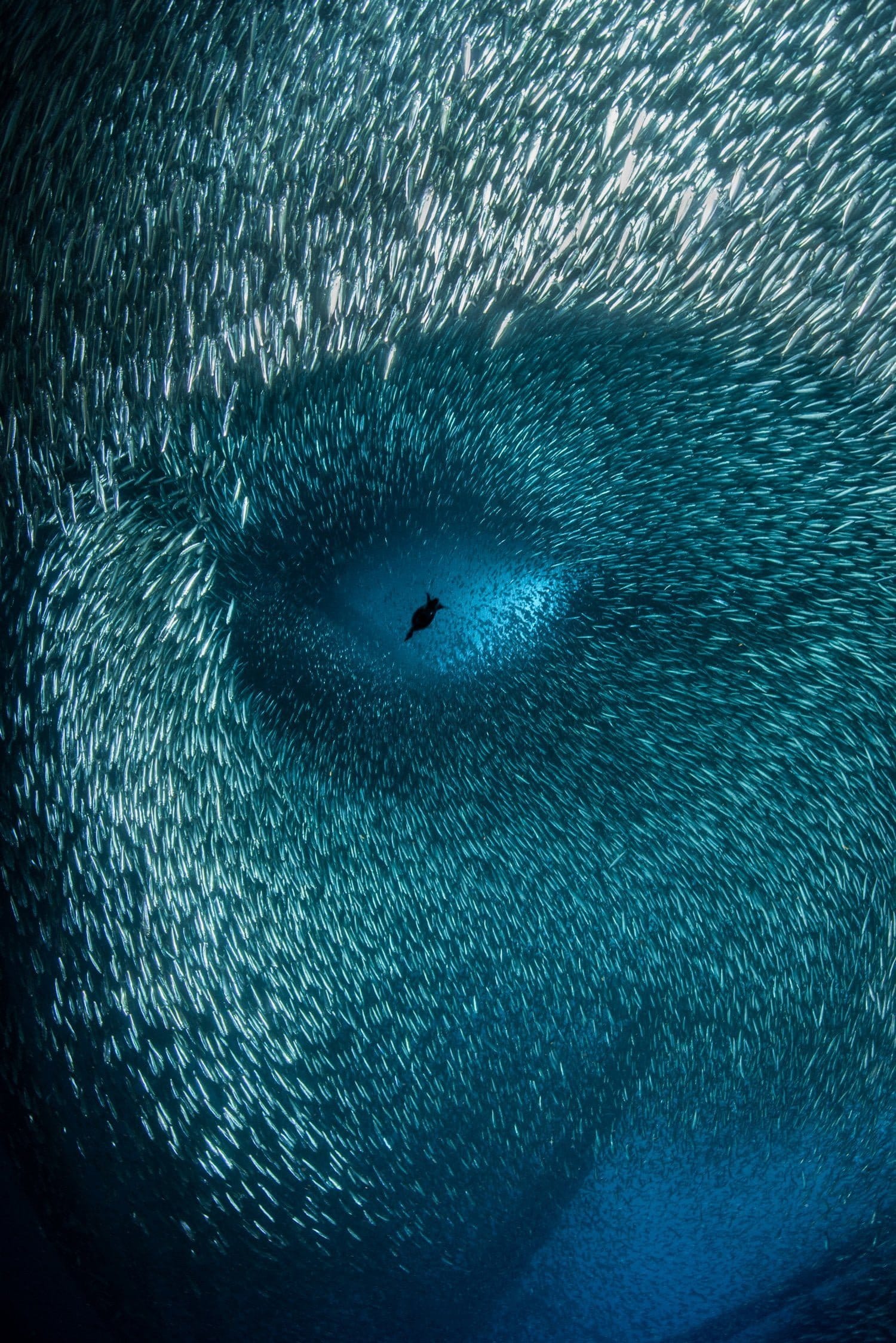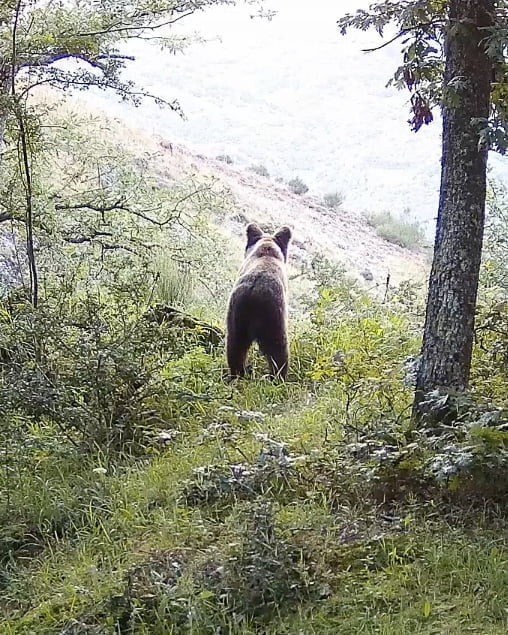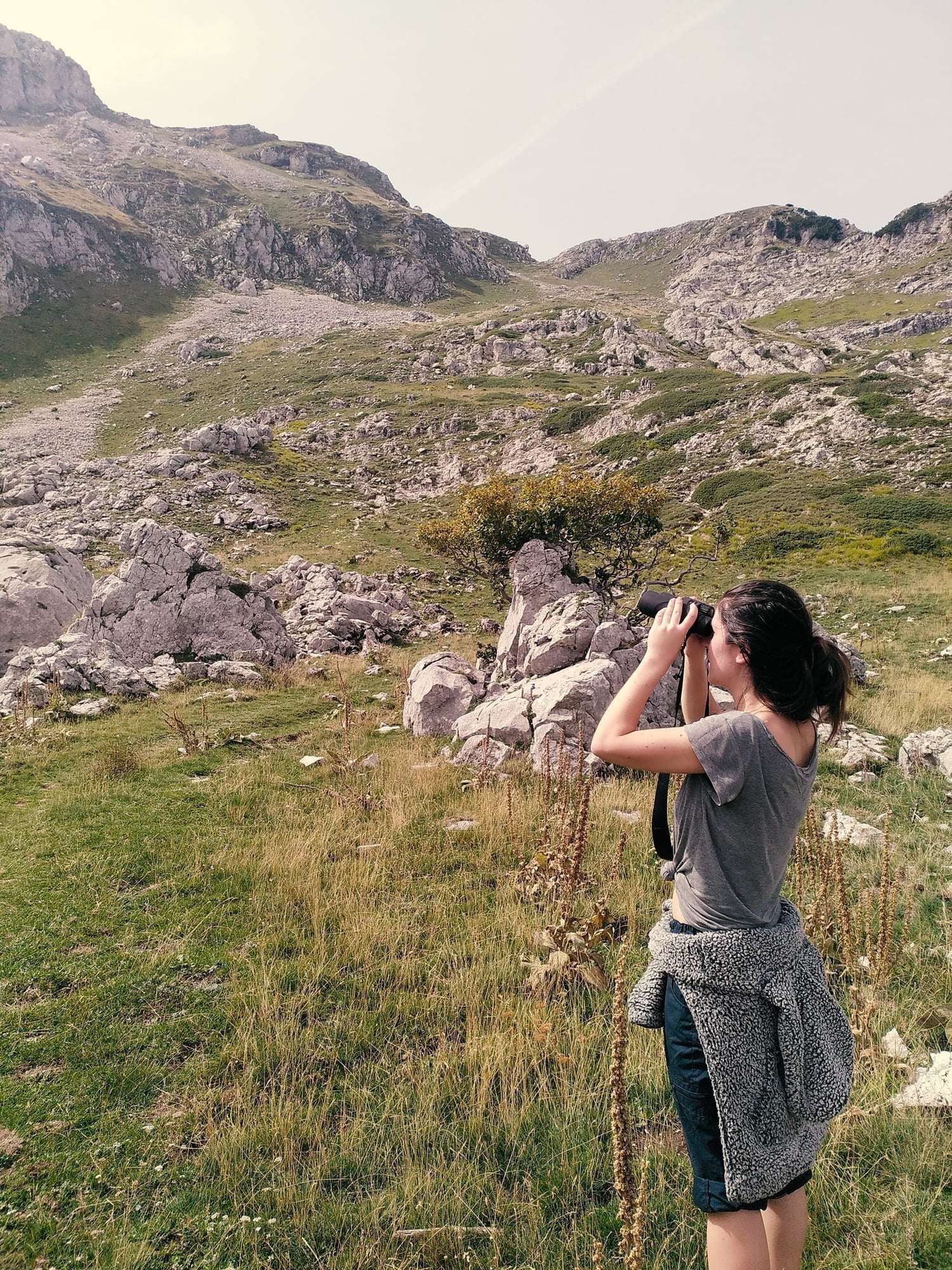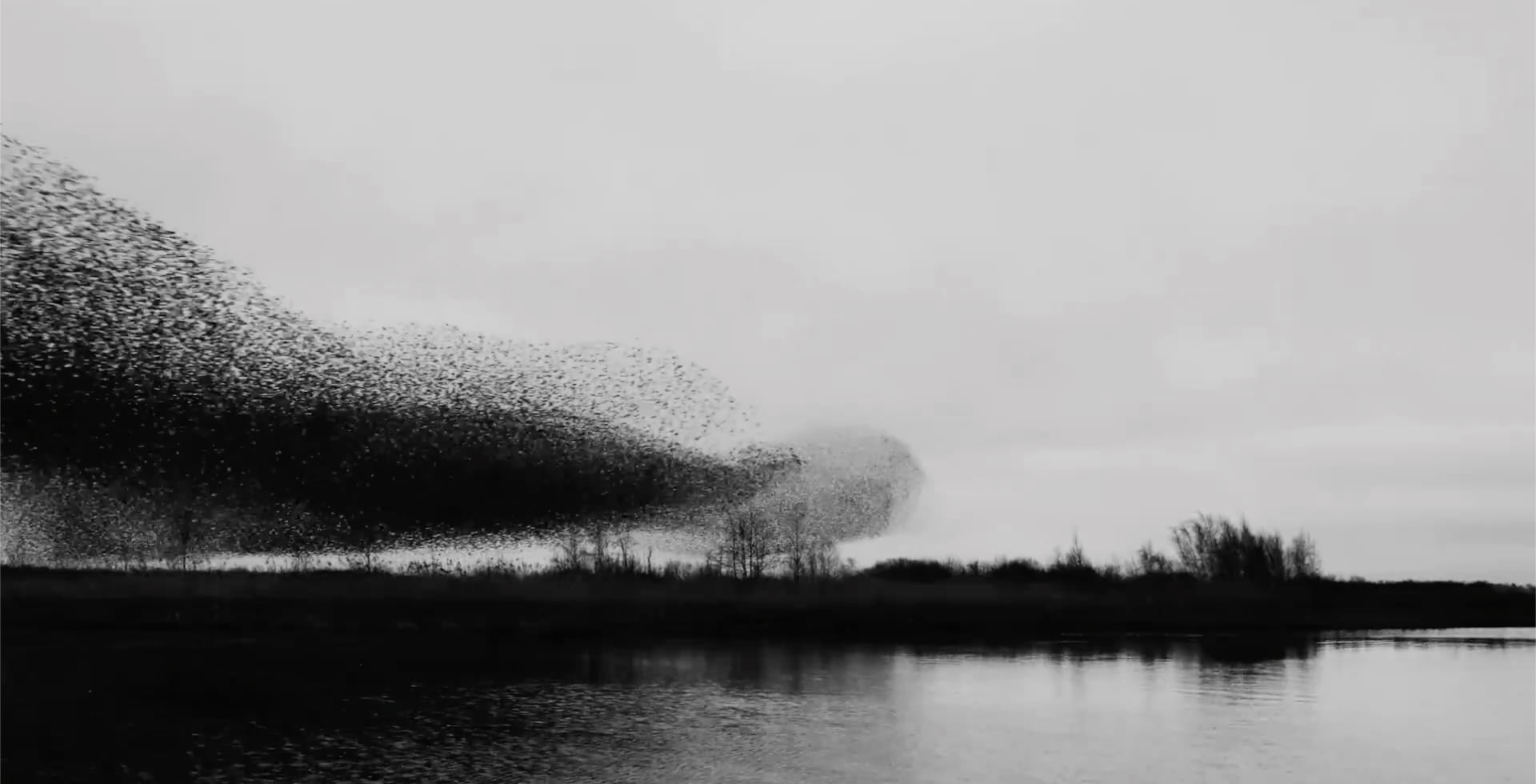Honey bees aren’t the only bees. Krystle Hickman became fascinated by the diversity of bees that occur naturally in her area, and began photographing them to bring more awareness to these creatures and their role in keeping ecosystems alive.
It’s commonly said that leaving little dishes of water out is good for bees. It’s half true. Leaving out water is helpful for honey bees, but no use to native bees. And by giving honey bees an advantage, this action can even be harmful to the native bees – which are the bees we need to prioritize.
At this point you may be thinking to yourself, honey bee? Native bee? What’s the difference?
When you picture a bee, more than likely the image of a common honey bee pops into your mind. Famous for their mean sting, these bees arrived in America with early colonizers from Europe. They’ve muscled out native bees and have disrupted centuries-old ecological relationships with native plants – plants that occur naturally in your zip code.
There are 4,000 species of native bees in the United States with more than 1,600 in California alone and they play a critical role in a healthy, regenerative earth. Estimated to pollinate 80 percent of flowering plants around the world, including most of the ones we use for food, native bees are vital to our ecosystem. And, they rarely sting. Without them, those plants couldn’t reproduce and life as we know it wouldn’t be possible.
Support Imagine5
We’re able to tell stories like this because of people like you. Join others from around the world in supporting Imagine5’s mission towards a sustainable future. Join today and receive our latest magazine for free.
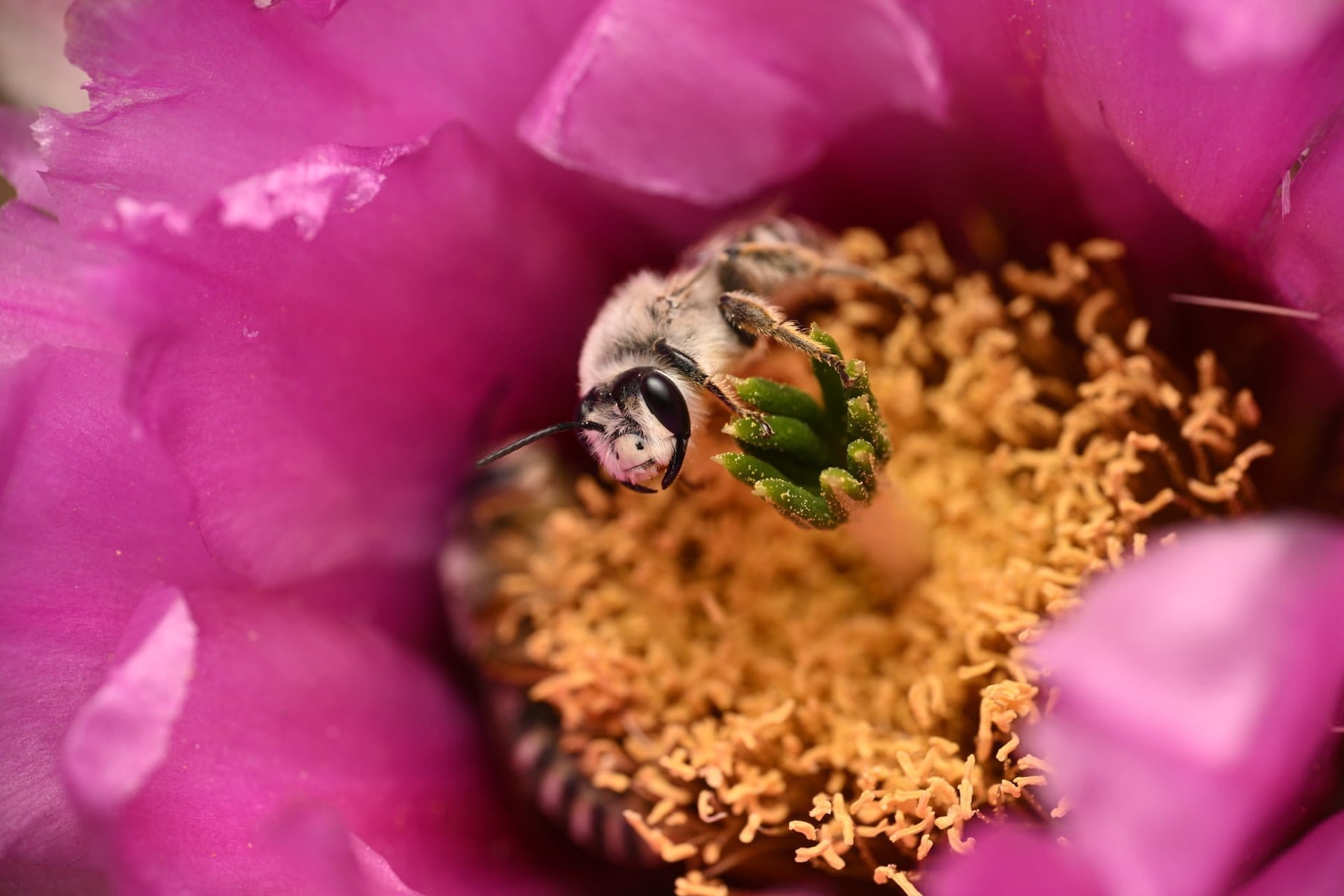
Krystle Hickman, a community scientist and conservation photographer based in Southern California, has been advocating for native bees for several years. Hickman’s primary goal is to bring more awareness to the decline in native bee species while highlighting their biodiverse ecosystems. As a conservation photographer, she focuses on capturing native bees in their natural habitat as they land in flowers that coat their feet and backs with pollen, stare directly into the camera with curious eyes, or sleep together on branches.
Community scientists like Hickman are becoming a more embedded part of scientific research. Thanks to apps like iNaturalist, anyone can make observational discoveries on their own and share them with other users. Scientists are able to see photos with dates and locations of observations in the wild and changes happening in real time.
“One of the great things about nature is that it doesn’t revolve around people”
Krystle Hickman
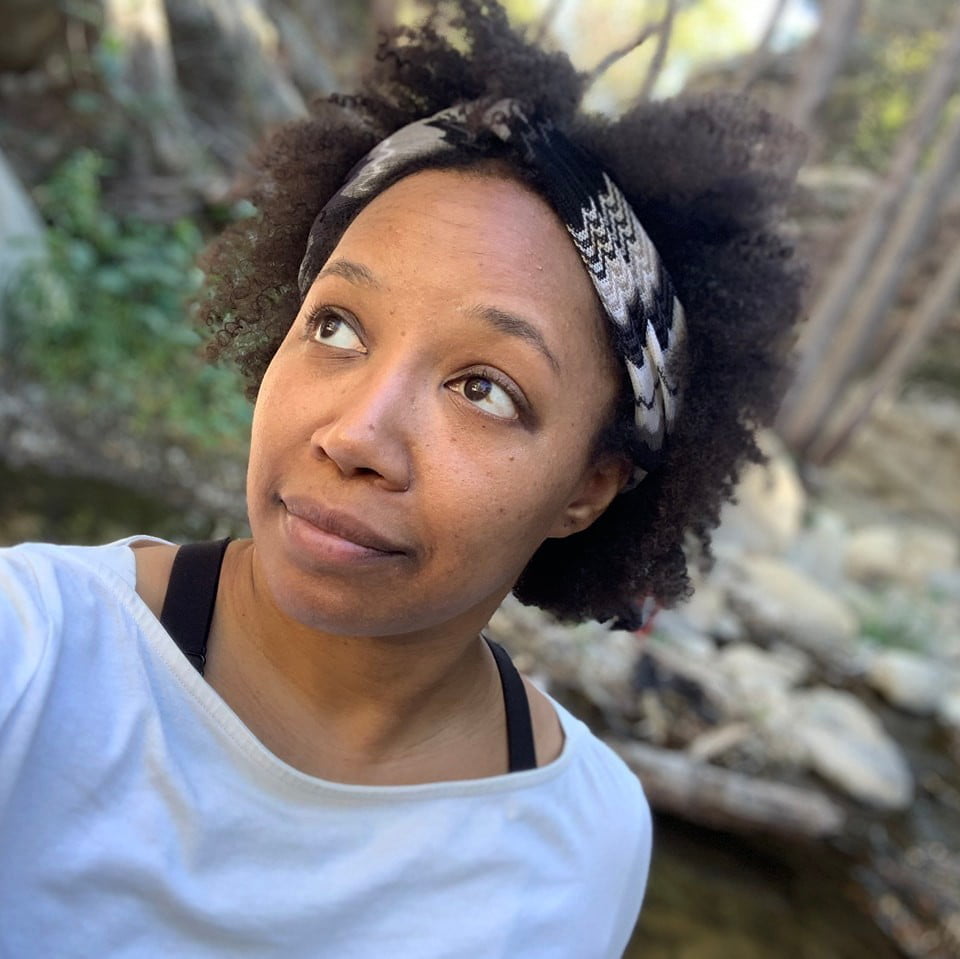
Hickman, who used to work as a visual artist, took her first bee photos with her smartphone – the only camera she had at the time. Now, she’s obsessed. “I don’t take any days off,” she says. “I love what I’m doing and one of the great things about nature is that it doesn’t revolve around people. You’re in an environment where humans don’t matter and you’re just there, observing bees and organisms going about their lives on their own schedule.”
Scientists have praised Hickman’s work in gathering invaluable observations and photo evidence of bee behavior in the wild. She has been the first person to photograph some species of bees in their natural habitat, and has worked with institutions such as the LA Arboretum, the Xerces Society, and The California Bumble Bee Atlas.
One thing Hickman noticed is that climate change has shifted relationships between native plants and native bees. The Xeralictus timberlakei, a handsome grey bee with tinges of brown, has a symbiotic relationship with Mentzelia confertiflora, a native Californian flower that resembles the ghost flower. Female bees dive into the bud of the flower and their legs stick out as they collect the pollen. As male bees patrol, they see the females’ pollen-covered legs in the bud and attempt to fly down to mate with them. These flowers are found all over the southern Mojave desert up to Joshua Tree and Anza Borrego, but because of changes in rainfall patterns, things have shifted for the Xeralictus.

Last spring, heavy rain came unusually early, and Hickman noticed that the Xeralictus were active earlier, and over a longer period. When temperature shifts due to climate change, we’re able to see the effect it has on native species, ranging from changes in routine or even a total disappearance altogether. “When I would go out to the desert to look for rare bees, I used to see them in pretty large numbers, but when the temperature went up because of climate change, there were less flowers blooming so they were swarming around just a few blooming plants,” Hickman says. “Shortly after, when I went to the same spot, I saw a bunch of honey bees swarming around the same plants and taking all the resources, and [in 2022], I didn’t see any native bees at all and only honey bees, who seem to have taken over completely.”
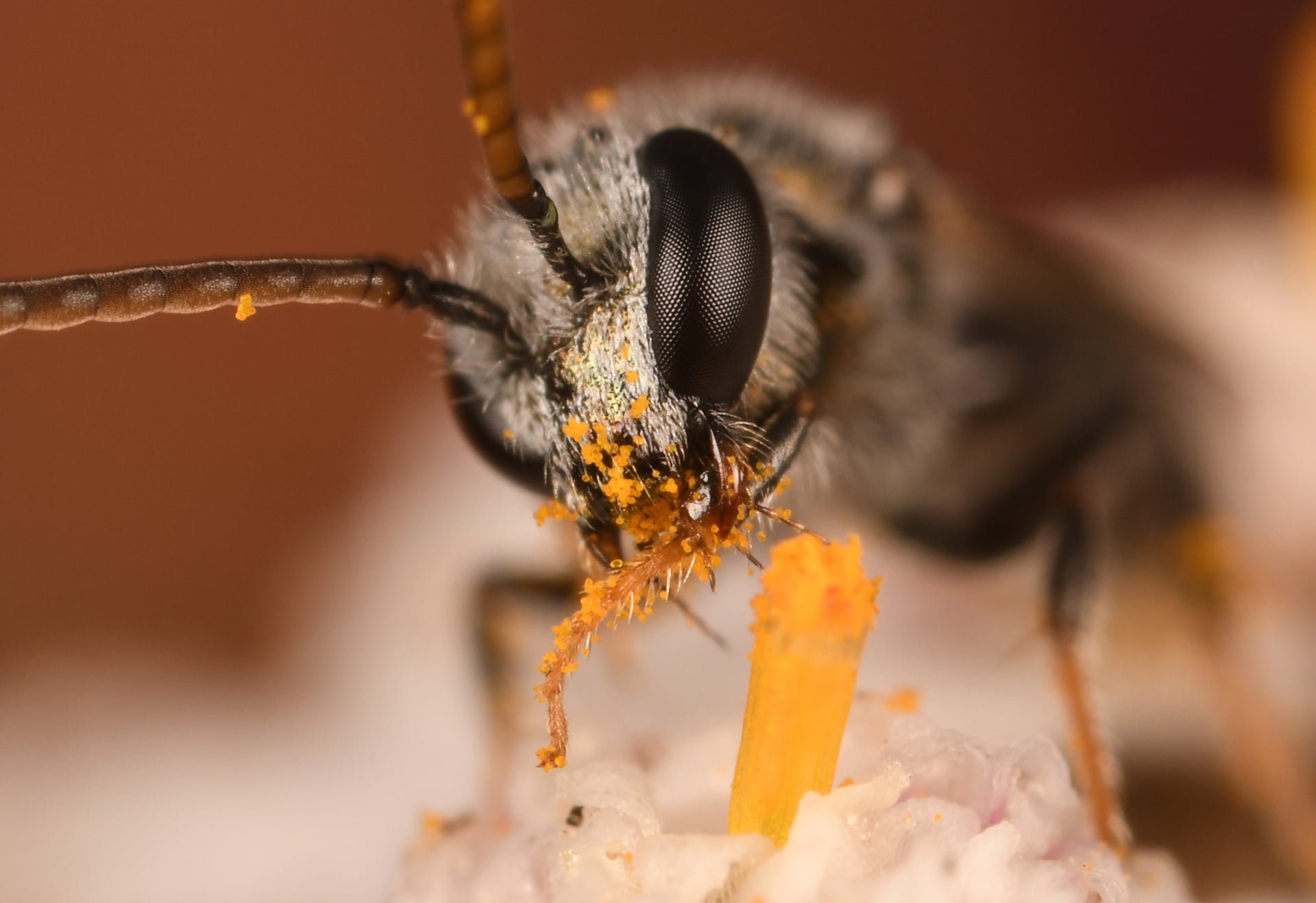
A male sweat bee on a yarrow flower at Crescent Farm, a special garden created during California’s worst drought, to test water-saving strategies.
The outlook is concerning, but thankfully, Hickman has noticed that there’s been a collective shift in wanting to learn about the earth and its ecosystems in a more holistic way. “I feel like the general population is starting to become very aware of nature, where they’re noticing that nature doesn’t revolve around them, but recognizes that it’s something that needs to be protected and is valuable purely because it exists and not because it benefits us,” Hickman says.
If people are excited by their local nature, getting involved with community science is a great way to begin their ecological journey. “There’s no barrier to entry except time,” she says, “and if it’s something you’re really interested in, you might want to make time for it. I’ve found that mentally and emotionally, it’s been really healthy for me.”
Main photo: A male Anthophora (likely of the species crotchii).
We’re able to share tips like this because of people like you. Join others from around the world in supporting Imagine5’s mission towards a sustainable future. Become a member, or donate what you can. Find out more here.
WHAT YOU CAN DO
Take a look around your garden, backyard, or neighborhood. Are there insects buzzing around? Are wildflowers blooming? Once you start thinking about your garden as an entire ecosystem, rather than separate plants and animals who simply exist in it, lifecycles start to become more apparent. And native plants are its foundation.
Starting a native garden is one of the best ways to support a healthy and biodiverse ecosystem. Native plants are lower maintenance than ornamental plants and lawns, and beautiful all year round. They don’t need much water, because they’re already adapted to the local climate, they’re resilient enough to not need pesticides or fertilizers, and they grow deep roots that help to prevent soil erosion.
To discover native plants that grow in your area, some of the best resources in California include the Hahamonga Native Plant Nursery and the Theodore Payne Foundation for Wild Flowers & Native Plants. A great national search inquiry for native plants is Audubon’s Native Plant Search, National Wildlife Federation’s Native Plant Search, and a comprehensive list of other native plant sources can be found at the Homegrown National Park website.
Nature
STUNNING PHOTOGRAPHY


